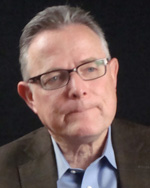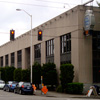Summary
Frank Blethen, The Seattle Times publisher says, “To be an independent newspaper committed to journalism is our gift to the community.” Blethen, the fourth generation of this family-owned company (click on Story of the Newspaper), is proud of the Times’ role as a “voice [for the community] not beholden to Boeing, Nordstrom, or the unions.”
Although 2000 to 2010 was a decade of retrenchment, caused in part by a war for survival with Hearst’s Seattle PI and “severe downsizing” (click on the Backgrounder), through it all Blethen counts as a success maintaining quality journalism and quality home delivery service – The Times guarantees a paper on every subscriber’s porch by 5:30 a.m.
Executive Editor David Boardman embraces innovation. He uses a family metaphor to describe the evolution of The Times integration of print and digital. Five years ago, “we talked about it [print and digital] as siblings that share the same DNA of public service and ethics,” says Boardman. The goal was to optimize the number of people who used both.
Two years ago, with the proliferation of mobile and the increased speed of digital, “We said all these things share our values.” To topple the remaining walls separating print and digital, Boardman reorganized the newsroom into three activities:
- Creation – which Boardman describes as externally focused “finding stuff out”
- Curation – “making sense and getting it to users” and,
- Community – “the gatekeeper metaphor is dead,” Boardman says. The Times supports Seattle’s active “blogosphere” to strengthen its hyper-local networks. (For an example, click on Enterprise Stories and read The Times’ 2010 Pulitzer Prize winner for breaking news, “The slaying of four Lakewood police officers.”)
To implement this change to the newsroom culture, Boardman assigned two seasoned managers to use their journalism expertise in new ways. Kathy Best, who had been managing editor for digital news, became managing editor in charge of content “creation,” working on newsgathering and story development with reporters, editors, photographers and videographers throughout the newsroom. Suki Dardarian, formerly managing editor for news, now oversees print and digital “curation” – editing, design and production – as well as seattletimes.com.
Check This
Click on Journalist’s Epiphanies (J-Epiphanies on the toolbar) to hear the stories of how the power and purpose of journalism became apparent to them. Blethen tells the stories of The Times’ coverage of Boeing 737 flaws and the misdeeds of Washington Congressman Brock Adams. Boardman recalls a front page written in the languages of Seattle’s non-English speaking residents to warn them about a safety hazard. Dardarian cites a recent article, “Seniors for Sale” (Click on Enterprise Stories), that reports on the mishandling of the elderly in adult family homes. Best tells the story of her decision, while at the Seattle PI, to re-investigate a sensational child abuse case in Wenatchee, Wash., after one of her colleagues said, “There’s something not right about this.”
Coming Next, the Mountain States series: The Coeur d'Alene (Idaho) Press, The Bozeman (Mont.) Daily Chronicle, The Jackson Hole (Wyo.) News & Guide, The Deseret News (Salt Lake City, Utah), and The (Grand Junction, Colo.) Daily Sentinel.
Follow us and comment on Facebook.
-- Sara Brown and Paul Steinle















